Toronto Grow Op House Inspection
The good news is we can always remove all existing mould and return the house to occupancy standards. Once the operation has been shut down and the humidity drops to normal levels, the mould growth will slow or stop. The last step is to clean up the existing infestation and ensure that there are no other moisture sources that may lead to continued growth. A good way to think of the operation is that someone has created a greenhouse inside a building that is totally unsuited for it.
Growhouse Clean Up and Inspection
You’ve found out that the house you rented out to someone has been turned into a marijuana grow operation. You may not have any idea what to do or exactly what your responsibilities are, but there are a series of steps that you must go through.
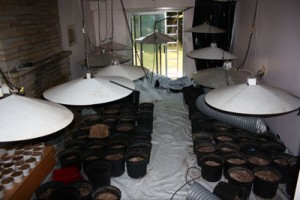
When a grow operation is first “busted”, the police enter the home and remove all the plants. They enter the home (normally) by breaking down the front door and that can leave things a mess.The police then simply cut off the plants or pull them out of the pots. Chemicals, fertilizers, soil, etc. are normally left behind, but the high intensity light bulbs are usually removed.
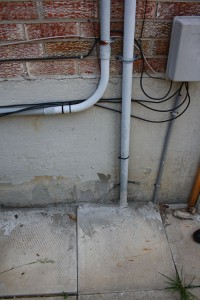
After all the materials have been removed and the grow operation halted, the electricity is shut off. This is done because the operations often bypass the meter to disguise the amount of electricty used (checking for sudden spikes in electrical useage is a common tactic to find grow houses). The bypass is never electrically sound, is very dangerous, and so a shutdown is required until the repairs and inspection are done.
When a growhouse is shut down, the city issues an “Order to Remedy Unsafe Building” which is also known as a Schedule A or B. This order sets out the repairs and cleanup that need to be done in order for the building to be made habitable once again. It is at this point that most homeowners become involved in the process. In the Schedule, a few inspections are also set out. These can include a structural, an HVAC, an environmental, fire & safety, and an Electrical Safety Authority report.
These inspections are undertaken when the cleanup of the operation has been completed. An initial inspection is often useful, but not required. Clients often find that having SBS go through the home before the cleanup will help them understand exactly what needs to be done. This makes the remediation a bit more expensive to complete as it adds an extra inspection (and fee) to the process (but in the long run this may make the process cheaper).
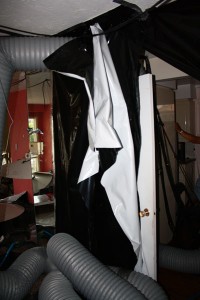
When a grow operation is created in a home, there is little care about how the building is treated, other than to hide the plants etc. Growing marijuana has a strong pine-like odour and, combined with the mositure of watering the plants, the operation needs to be vented to the outiside to ensure that it’s not detected. Given that growers don’t really care about the home, they will run large ducts through walls, floors, ceilings, etc. Critically, the growers may cut through structural beams to run these ducts. This is why an engineering inspection is needed; to ensure that the building isn’t going to fall apart.
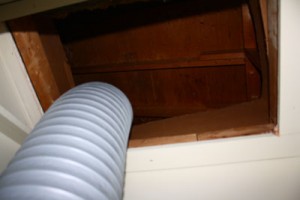
This ducting system is often the basis for mould contamination as they often open up into the attic. If the operation occurs in winter, the resulting condensation can lead to severe mould growth on the roof deck.
The remediation process begins with a simple cleanup of all the pots, soil, fertilizer, chemicals, and other assorted debris from the grow operation.
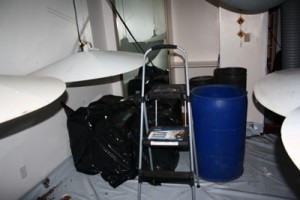
Once the basic cleanup is done, the next stage is to remove all materials that have been contaminated by chemicals or mould. Some areas of mould growth may be suitable for cleaning, but depending on the extent of the water damage, it may be easier to do a full removal. This is normally on the same scale as major renovation work (because that’s often what it is).
Once the removal and cleaning process is complete, the inspections can be completed. The final structural inspections ensure that all recomendations have been completed and the building is up to standards. The mechanical inspection ensures that the HVAC systems can be run without problems. The air quality inspection is often the most important as once the air quality is deemed safe, the Electical Safety Association inspection can be carried out and the power turned back on.
Once the power is back on, the job becomes easier, but this is often the most expensive part of the job – rebuilding the home so that it can be lived in once again. This is simply a major home renovation and no special re-building is needed.
Once the renovations are complete, the home will be back (or better) than it was before the grow operation was started. This can be a long and complicated process, but it is not one that cannot be completed by the home owner.

